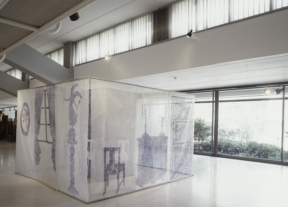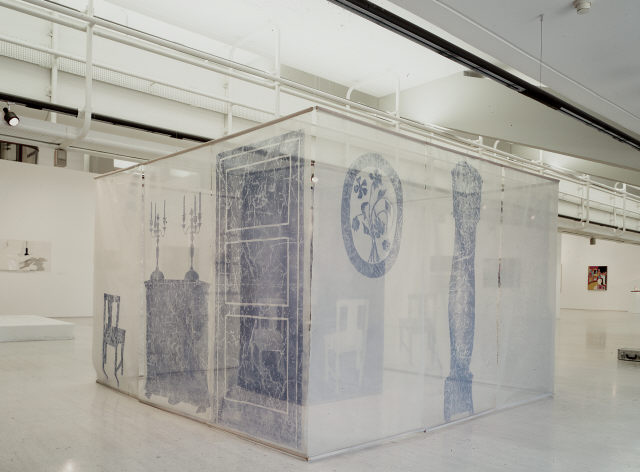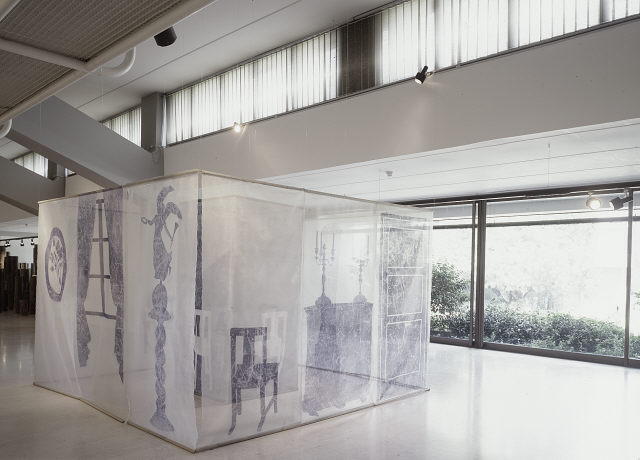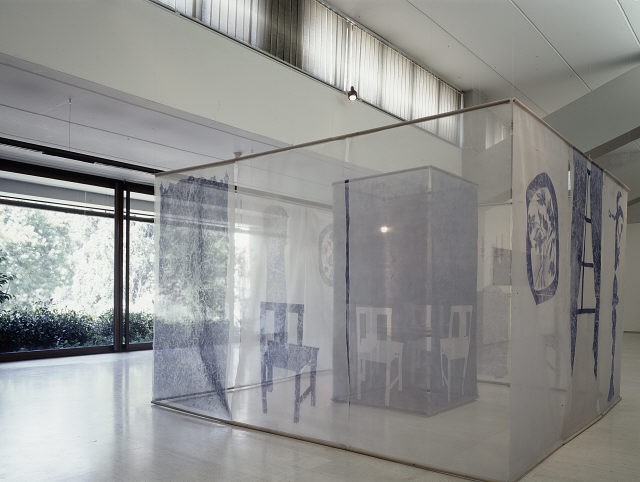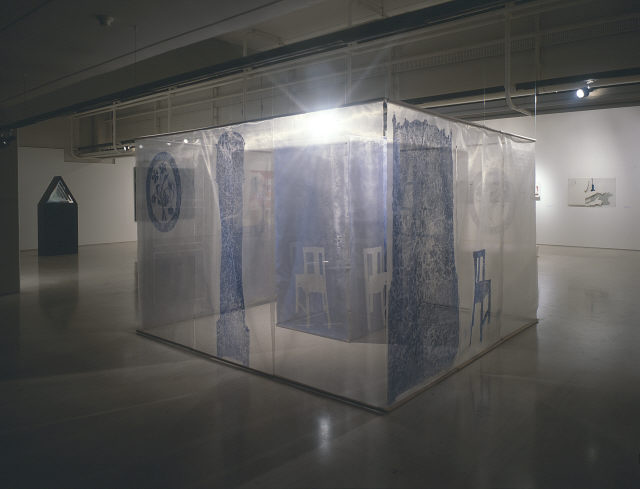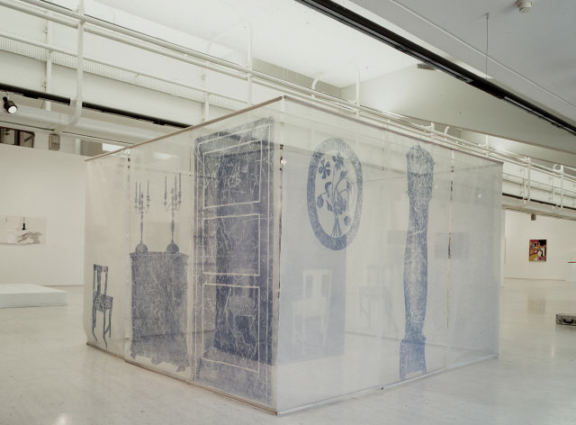
- 1971
- Net, ceramic dish, glass cups, stainless steel knife, CD-Rom, white paint on wood, blue spray painted nylon and painted cotton
- Inv. 78E608
Ana Vieira
Ambiente – Sala de Jantar
Ambiente – Sala de Jantar (Environment – Dining Room) by Ana Vieira was the first in a series of three installations entitled Ambientes, which the artist produced between 1971 and 1972. Constituted as a double structure of light, translucent netting, in the manner of a weightless white and blue labyrinth, it encloses in its core a white table laid with glasses, plates, and cutlery, surrounded by an initial parallelepiped of suspended blue netting, in which four chairs in perspective arise like absent forms whose well-defined contours paradoxically announce a non-existent materiality. This inner “cube” is in turn protected and enclosed by a larger one that delimits the space of the dining room, separating it from the exterior. In the latter, the chromatic values are inverted, the shapes of objects and furniture recognisable from the domestic interior are now simulated, spray painted in blue on the dozen white sheets that make up the perimeter of the divide: a wall clock, console, dresser, chest of drawers with candelabra, door, curtained window, two oval pictures of flowers, and a chair. All of these accessories belong inside, but, seen from the outside, they make this space appear familiar and strange at the same time.
Composed in accordance with the criteria of an average, somewhat traditional taste, on which the artist seems to cast an ironic gaze, the Ambiente leads us to reflect on the symbolic values associated with the house in Western culture, in the bundle of contrary and relative attributes pertaining to it: private/public, interior/exterior, full/empty, shade/ light, desire/appearance… As a project that is scenographic in nature, this installation – in common with the other two that Ana Vieira would create shortly afterwards – reveals an important development in the artist’s visual creation, from the post-pictorial recreation of objects in daily use in earlier works, to a work that, above all, is related to a phenomenology of physical and social spaces. Feeding off a contrast between the tangible object and its design and plan as a shape in space, the Ambientes are constituted as stage scenery, a small theatre of shadows that is completed by the introduction of sound elements: the recording of noises and sounds associated with the use of the staged spaces, in this case, a dining room where elegantly arranged and designed objects contrast with the echoes and murmurs of a shared meal.
In Ambiente – Sala de Jantar, the sound envelops and captivates the observer as much as does the visual image, in the contemplation of the reserved and somewhat oppressive charm of a bourgeoisie interior space, in which the rigour governing the arrangement of the objects reveals the cliché of the banality and unchanging order of things, as if the space were a sanctuary. Let us recall Jean Baudrillard when he speaks to us of spaces and objects as contradictory systems of signs and codes (here moulded in blue, the most immaterial of colours*) that fatally imprison the freedom of the human being.**
Ana Filipa Candeias
May 2010
* Cf. Jean Chevalier and Alain Gheerbrant, Dictionnaire des Symboles, Paris, Robert Laffont, 1987.
** Jean Baudrillard, For a Critique of the Political Economy of the Sign, St. Louis, Telos Press, 1983.
| Type | Value | Unit | Section |
| Height | 200 | cm | |
| Width | 312 | cm | |
| Depth | 312 | cm | |
| Width | 104 | cm |
| Type | Acquisition |
